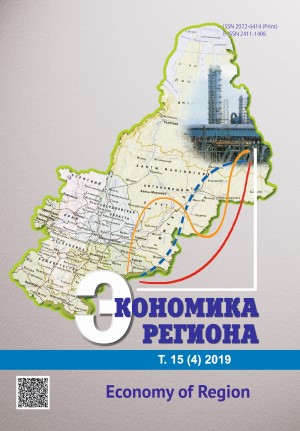ARE EXPORTS AND IMPORTS ASYMMETRICALLY COINTEGRATED? EVIDENCE FROM THE EMERGING AND GROWTH-LEADING ECONOMIES
ARE EXPORTS AND IMPORTS ASYMMETRICALLY COINTEGRATED? EVIDENCE FROM THE EMERGING AND GROWTH-LEADING ECONOMIES
Author(s): Ozge Baris-TuzemenSubject(s): Economy
Published by: Институт экономики Уральского отделения Российской академии наук
Keywords: Exports; Imports; Current Account; External Balance; Trade Imbalance; Sustainability; Long-run; ARDL Cointegration; NARDL Cointegration; EAGLEs Countries
Summary/Abstract: Knowing the possible presence of a long-term connection between exports and imports is important both for current and future macroeconomic policies and for the sustainability of the current account deficit. The existence of a long-term relationship between variables of interest implies that the countries are not in violation of their budget constraints. Moreover, it means that their macro policies are effective. In this context, this paper aims to investigate whether the long-term equilibrium relationship between exports and imports in the emerging and growth-leading economies (EAGLEs) is symmetric or asymmetric. The EAGLE is an acronym introduced by the Spanish bank BBVA in 2010. The members of the EAGLEs are Brazil, China, Egypt, India, Indonesia, Mexico, South Korea, Russia, Taiwan, and Turkey. The annual dataset covers the period from 1960 to 2017. For further comparison, on the one hand, I employed autoregressive distributed lag bound test (ARDL) for analysing symmetric long-term relation among the variables. On the other hand, asymmetric long run convergence is examined via nonlinear ARDL method. According to the results of the linear ARDL test, there exists a strong cointegration association between exports and imports for 3 out of 10 countries. However, the evidence from nonlinear ARDL test shows that the null hypothesis stating the lack of cointegration can be rejected for 8 out of 10 countries. The existence of the cointegration link amongst the series indicates that the trade imbalances are short-term phenomenon and are sustainable in the long-term. In other words, these countries are not in violation of their intertemporal budget constraint.
Journal: Экономика региона
- Issue Year: 15/2019
- Issue No: 4
- Page Range: 1241-1252
- Page Count: 11
- Language: English

